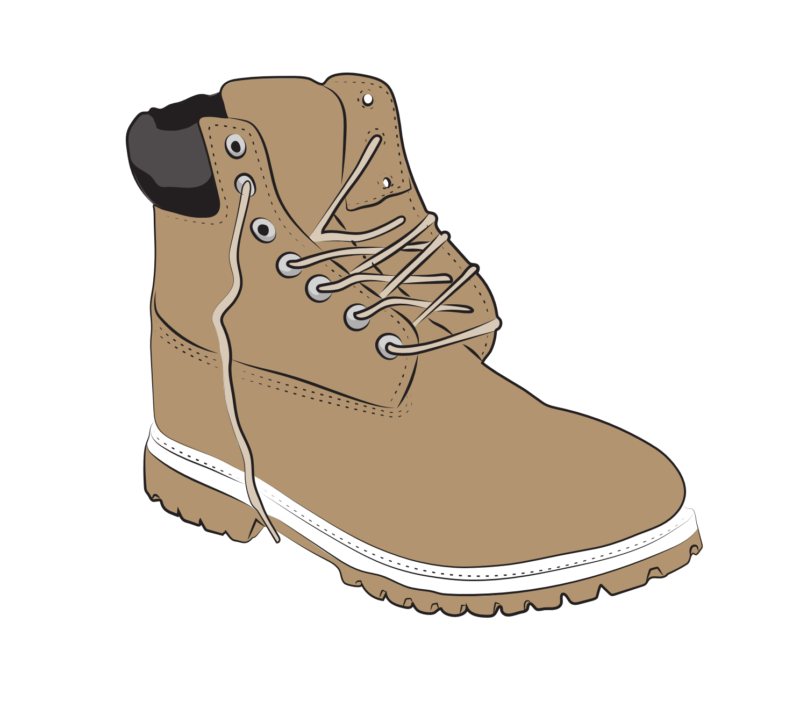FEATURES:
- Available in nine colors
- Runs about a half size large
- Rappers like them
I bought my first pair of six-inch Timberlands a few years ago, at a mall somewhere outside Sacramento, California, where I was visiting my parents for the holidays. I left the store with a large tan box; like several of my favorite sweaters and at least one Hawaiian shirt, the boots were an impulse buy.
I wore them through the muck and graying slush of a New York winter, where they performed with distinction, shooting to the top of my personal “Best Boots” list. They’re tan—specifically, “the color of wheat,” the site says—and thickly insulated, with a heavy sole. Because it’s been a few years, the leather is smeared, a little grayer; the heels are worn down from the pressure of my gait and the miles I’ve walked.
Since then I’ve rocked my Timbs just about everywhere: from a beach in Antigua to Fashion Week in Paris to a hike in the Adirondacks in mid-fall. This is because they are, I believe, a Platonic ideal—Aristotelian telos, or what the Dragon Ball Z–heads would call the boot’s final form. The Timbs’ perfection in the fiercely utilitarian realm is a holy thing. (Their only real drawback is that they are kinda heavy.)
What’s more, I’m convinced that the story of Timbs is the story of America, at least as it’s currently written—that’s to say, it’s the story of an immigrant who made good. This has to do with Timberland’s history. The company’s founder, Nathan Swartz, immigrated to America just before World War I. After apprenticing as a stitcher, the Odessa-born cobbler worked his way up to buying the Abington Shoe Company and bringing his sons into the family business. The Swartzes’ breakthrough, however, wouldn’t happen until 1965, when they figured out how to use injection molding on leather, which meant shoes that were fully waterproof via a leather upper fused directly to the sole without stiching. The boot that Abington produced was named Timberland in 1973, and, because of its immediate popularity, the Abington Shoe Company renamed itself the Timberland Company within months.
Then came the ’90s. Hip-hop happened, and so did cold-weather fashion. The craze was mostly powered by Duck Down Records rappers and the Wu-Tang Clan in New York. The Timberland Company wasn’t really on board; despite record-breaking profits, the suits worried that people were buying the boots for “the wrong reason,” according to a 1993 New York Times article. At the same time, Vibe reported that “everyone from thugs to step teams were stalking, walking in their six-inch construction boot” because they could handle “concrete, barbed wire, and broken glass.” Eventually, the Timberland Company got used to it. Once the shoe’s street status was cemented, sales tripled. America works in a similar way, rejecting outsiders until they prove they’ve got capital. And then it’s straight into the melting pot: the country claims their labors as its own.
In 2011, the Timberland Company completed its corporate life cycle when it was purchased by the VF corporation for $2.3 billion. The boots had finished their journey, and were rightly ubiquitous. Warm, rugged, fashionable, and, in their way, finally, furiously American—just like rap. Rappers and hip-hop heads stood by the shoe; where do you think Timbaland got his name?
A couple years ago, confirmed Timbs-head and hip-hop pioneer RZA shared an anecdote from way back when the Wu-Tang Clan was still trying to make it big. “I only had one pair of Timbs,” the rapper recalled to GQ. “I told [Raekwon] I wouldn’t buy anything else until we made it, so in his song he called them ‘the boots that paved the way.’” Now, RZA says, “I probably have every color of Timberlands, personally”—which is another way to say he has achieved the American dream.
I think about this whenever I wear my Timbs—I feel more alive then, more open to letting a day or night unfold the way it wants to, because I’m prepared for anything. Amid the ice and darkness of the bluer months, it’s easy to give in to airless existentialism: Why am I here? In these chilly times, what gives me hope are the sturdy things that endure the year with me, objects I admire for their permanence and versatility—the boots that still pave the way.





